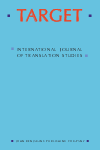
Target-International Journal of Translation Studies
Scope & Guideline
Exploring the Depths of Communication and Linguistics
Introduction
Aims and Scopes
- Interdisciplinary Approaches to Translation:
The journal explores translation from various disciplines, including linguistics, literature, cultural studies, and technology, fostering a comprehensive understanding of translation practices. - Focus on Audiovisual Translation (AVT):
A significant portion of publications addresses the nuances of audiovisual translation, including subtitling, dubbing, and the impact of streaming platforms on translation practices. - Cultural and Political Contexts of Translation:
Research often highlights the cultural and political implications of translation, examining how translations influence and reflect societal norms and values. - Technological Integration in Translation:
The journal investigates the interplay between technology and translation, including machine translation, data literacy, and the use of digital tools for enhancing translation quality. - Translation Education and Training:
Contributions focus on pedagogical approaches to translator training, exploring competencies required for effective translation and interpreting in various contexts.
Trending and Emerging
- Translanguaging and Multimodal Translation:
There is a growing focus on translanguaging practices and multimodal approaches to translation, emphasizing the blending of languages and media in translation processes. - Impact of Streaming and Digital Media on Translation:
Research examining the implications of streaming services and digital media on translation practices has surged, highlighting how technology reshapes audience reception and translator workflows. - Cognitive and Psychological Aspects of Translation:
Emerging studies on the cognitive processes involved in translation and interpreting are gaining traction, offering insights into how translators think and make decisions during their work. - Social Justice and Activism in Translation:
There is an increasing emphasis on social justice themes, including translation's role in activism and representation of marginalized voices, particularly within the context of queer and diasporic communities. - Data-Driven Translation Research:
The integration of statistical and data-driven methodologies in translation studies is becoming more prevalent, reflecting a trend towards empirical research and quantifiable analysis.
Declining or Waning
- Traditional Literary Translation:
Research centered on classic literary translation techniques is less frequently published, suggesting a movement towards more contemporary and innovative translation practices. - Legal Translation Studies:
While still relevant, the volume of articles focusing specifically on legal translation has diminished, reflecting a broader trend towards interdisciplinary approaches rather than niche legal contexts. - Historical Perspectives on Translation:
There appears to be a waning interest in historical analyses of translation practices, as newer research tends to prioritize current trends and technologies over historical frameworks. - Translation Norms and Fidelity Debates:
The discussions surrounding fidelity and norms in translation seem to be less emphasized, as scholars increasingly explore dynamic and context-sensitive approaches to translation.
Similar Journals
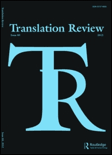
TRANSLATION REVIEW
Fostering Dialogue in Translation and Literature.TRANSLATION REVIEW is an esteemed academic journal dedicated to advancing the field of translation studies, encompassing critical analysis and theoretical explorations that inform contemporary practices in linguistics and literature. Published by Routledge Journals, Taylor & Francis Ltd, this journal has earned a respectable reputation within the scholarly community, evident from its current categorization in the Q3 quartile in Linguistics and Language and Q2 in Literature and Literary Theory. With issues spanning from 1978 to the present, TRANSLATION REVIEW reflects a rich legacy of scholarly discourse while also engaging with emerging trends in translation theory and pedagogy. The journal's Scopus rankings place it within the top 30% percentile of Arts and Humanities research, providing a significant platform for researchers and professionals to disseminate their findings. As a non-open access journal based in the United Kingdom, it welcomes contributions that offer new insights and foster dialogue around translation's multifaceted impact in a global context. Scholars, practitioners, and advanced students will find this journal an invaluable resource for both theoretical frameworks and practical applications in translation studies.
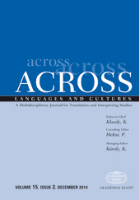
Across Languages and Cultures
Illuminating the Tapestry of Language and SocietyAcross Languages and Cultures is a leading journal in the field of Linguistics and Language, published by AKADEMIAI KIADO ZRT in Hungary. With its ISSN 1585-1923 and E-ISSN 1588-2519, the journal has established itself as a prominent platform for advancing research and discussion in the dynamics of language across diverse cultural contexts. Its impressive Q1 category ranking indicates its significant influence, with a Scopus rank of #227 in Language and Linguistics, showcasing its robust academic impact (79th percentile). This journal, converging from 2007 to 2024, aims to foster interdisciplinary dialogue and promote innovative research methodologies in multilingual studies. Though not an open-access journal, Across Languages and Cultures provides invaluable insights for researchers, professionals, and students eager to explore the intricacies of language use and its sociocultural implications. Located at Budafoki Ut 187-189-A-3, H-1117 Budapest, Hungary, it continues to serve as an essential resource for those passionate about the linguistic sciences.
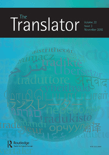
Translator
Bridging Cultures through Scholarly DiscourseTranslator is a leading journal in the fields of Communication and Linguistics, dedicated to exploring the complex dynamics of translation through critical analysis and scholarly discourse. Published by Routledge Journals, Taylor & Francis Ltd from the United Kingdom, this journal boasts a significant impact within its academic community, holding a prestigious Q1 ranking in Linguistics and Language and a Q2 ranking in Communication as of 2023. With a strong focus on interdisciplinary studies, it aims to foster an understanding of translation as both a linguistic and culturally significant practice. Researchers and practitioners alike can engage with cutting-edge research and extensive discourse, making it a valuable resource for advancing knowledge in this vital field. The journal spans a remarkable convergence of insights from 1995 to 2024, reflecting its long-standing commitment to academic excellence and innovation. Access to its resources is facilitated through various platforms, ensuring that findings are readily available to the broader academic community.
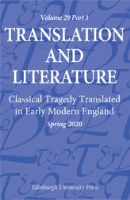
Translation and Literature
Unraveling the Threads of Language and LiteratureTranslation and Literature is a leading academic journal published by Edinburgh University Press, focusing on the intricate relationship between language and literature within the realms of translation studies. With an ISSN of 0968-1361 and an E-ISSN of 1750-0214, this journal provides a crucial platform for scholars and practitioners to explore and disseminate research that addresses both the theoretical and practical aspects of translation. Since its inception in 1996, Translation and Literature has established itself as an essential resource, particularly noted for its contributions to the fields of linguistics and literary theory, as indicated by its Q4 ranking in both categories in 2023. The journal's articles are designed to foster dialogue across disciplines, encouraging innovative thinking and collaboration among researchers, professionals, and students alike. Access to this valuable resource is currently available through subscription, ensuring high-quality scholarship reaches a diverse audience dedicated to advancing the understanding of translation's role in literature.

Current Trends in Translation Teaching and Learning E
Exploring Innovative Approaches in Language LearningCurrent Trends in Translation Teaching and Learning E is a premier open access journal published by UNIV HELSINKI, DEPT MODERN LANGUAGES, dedicated to advancing the field of translation studies. With an ISSN of 2342-7205, this journal has been providing a crucial platform for researchers, educators, and practitioners since 2010. The journal focuses on the latest methodologies, pedagogical innovations, and theoretical discussions related to translation and language education, making it an essential resource for professionals and students alike. By fostering an environment of open knowledge exchange, Current Trends in Translation Teaching and Learning E significantly contributes to the intellectual discourse in this vital field, ensuring that contemporary practices keep pace with the evolving landscape of global communication. The journal is poised to maintain its relevance and impact, providing a rich repository of research that reflects the dynamic and diverse nature of translation today.

Suvremena Lingvistika
Transforming Linguistic Knowledge into Accessible Insights.Suvremena Lingvistika is a distinguished open-access journal published by the Croatian Philological Society, dedicated to advancing research in the field of linguistics and language. Since its establishment, the journal has been pivotal in promoting scholarly dialogue within the linguistics community, especially among researchers and academics in Croatia and beyond. With an ISSN of 0586-0296 and an E-ISSN of 1847-117X, the journal has transitioned to an open-access model since 2007, ensuring that research is freely accessible to all. As of 2023, it holds a respectable Q3 ranking in the Linguistics and Language category, reflecting its potential contribution to the field. The journal's scope encompasses a wide array of linguistic disciplines, encouraging both theoretical and empirical studies. Supportive of new research, Suvremena Lingvistika aims to foster innovative approaches and methodologies in linguistics, making it an essential resource for students, researchers, and professionals eager to explore the complexities of language. With its ongoing publication until 2024, it continues to shape the linguistic landscape, providing valuable insights and fostering collaboration among scholars globally.
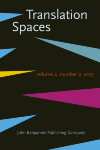
Translation Spaces
Unveiling the Dynamics of Translation Across DisciplinesTranslation Spaces is a premier academic journal dedicated to the interdisciplinary study of translation and its implications across various fields, including communication, linguistics, and literature. Published by John Benjamins Publishing Company, this journal is based in the Netherlands and boasts an impressive impact factor, reflecting its significance in the scholarly landscape, particularly within Q1 quartiles for Communication, Linguistics and Language, and Literature and Literary Theory as of 2023. Recognized for its commitment to advancing knowledge, Translation Spaces provides an essential platform for researchers, educators, and practitioners to explore innovative theoretical perspectives and empirical findings. With a comprehensive scope that spans from 2016 to 2024, the journal is indexed in Scopus, securing high ranks in both Arts and Humanities and Social Sciences, offering a 99th percentile rank in Literature and Literary Theory and maintaining a strong presence in Linguistics and Language. The absence of open access options ensures that the quality and integrity of published research are upheld, making it a valuable resource for the academic community engaged in translation studies.

Tradumatica-Traduccio i Tecnologies de la Informacio i la Comunicacio
Navigating the Future of Linguistics and Communication TechnologiesTradumatica-Traduccio i Tecnologies de la Informacio i la Comunicacio, published by the Universitat Autònoma de Barcelona, is a prestigious open-access journal that has established itself as a leading platform in the fields of Linguistics, Literature, and Communication Technologies since its inception in 2010. With its recent classification in the Q1 category of both Linguistics and Literary Theory, and an impressive 97th percentile ranking in Literature and Literary Theory on Scopus, this journal is recognized for its contribution to high-quality scholarly research. The journal serves as a vital resource for researchers, professionals, and students who are engaged in the dynamic intersection of translation studies and technology. Music its comprehensive coverage from 2019 to 2023, it aims to foster dialogues and advancements in translation methodologies and practices, making it indispensable for those looking to remain at the forefront of innovations in the field. Located in vibrant Barcelona, Spain, the journal provides an invaluable avenue for disseminating influential research while promoting an international scholarly community.

Translation & Interpreting-The International Journal of Translation and Interpreting
Exploring the Art and Science of Translation and InterpretingTranslation & Interpreting is the premier Open Access journal dedicated to the intricate fields of translation and interpreting, published by the University of Western Sydney's Interpreting & Translation Research Group. With an established reputation since its inception in 2009, this journal has quickly ascended to become a vital resource, recognized in the 2023 Q1 quartile rankings for both Linguistics and Language as well as Literature and Literary Theory. Its high standing is further supported by impressive Scopus rankings, placing it among the top journals in its field—#21 out of 1106 in Literature and Literary Theory and #204 out of 1088 in Language and Linguistics. With a commitment to disseminating original research and innovative practices, Translation & Interpreting serves as a crucial platform for scholars, practitioners, and students who aspire to deepen their understanding of translation dynamics and interpretation methodologies. Based in Australia, the journal actively contributes to global discourse by making research freely accessible, upholding the values of transparency and inclusivity in the academic community. Embark on your exploration of this influential journal that shapes the landscape of translation and interpreting research.
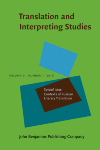
Translation and Interpreting Studies
Exploring the Art and Science of Translation and Interpreting.Translation and Interpreting Studies is a prestigious academic journal published by John Benjamins Publishing Co, focused on the dynamic fields of translation and interpreting. Established in 2011, this journal has rapidly ascended to become a leading platform in its domain, achieving Q1 quartile status in Linguistics, Language, and Literature categories as of 2023. With an impressive ranking of #16 out of 1106 in Arts and Humanities for Literature and Literary Theory, and #182 out of 1088 in Language and Linguistics, it is recognized for its significant contributions to scholarly discourse. Although not fully open-access, the journal provides essential insights and research findings for linguists, translators, interpreters, and students, fostering a greater understanding of the theoretical and practical implications of translation studies. Situated in the Netherlands, it plays a vital role in the global academic community, bridging gaps between theory and practice, and ensuring that cutting-edge research is readily accessible to professionals and scholars alike.